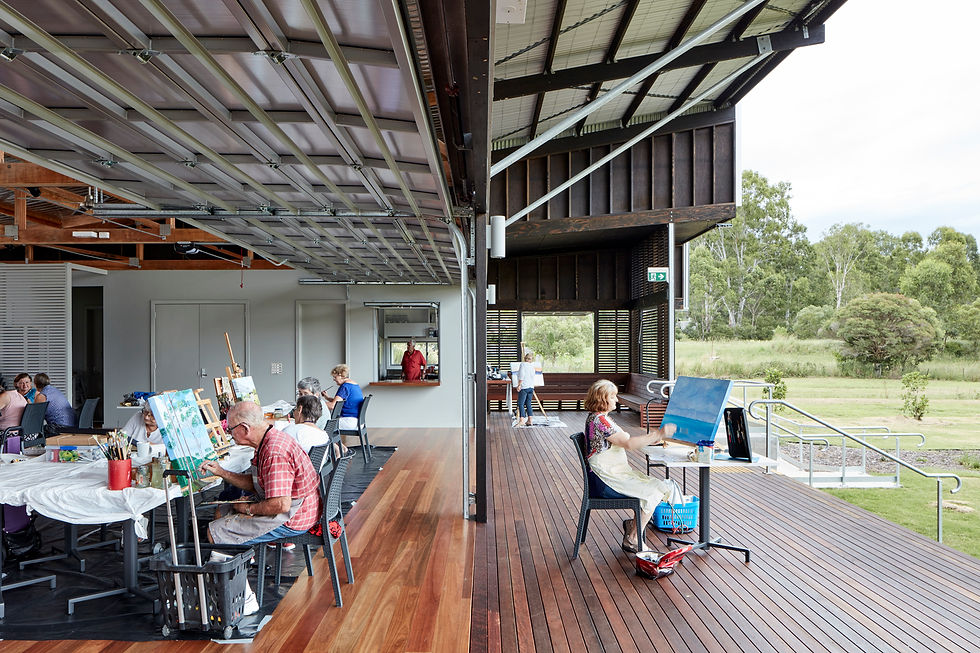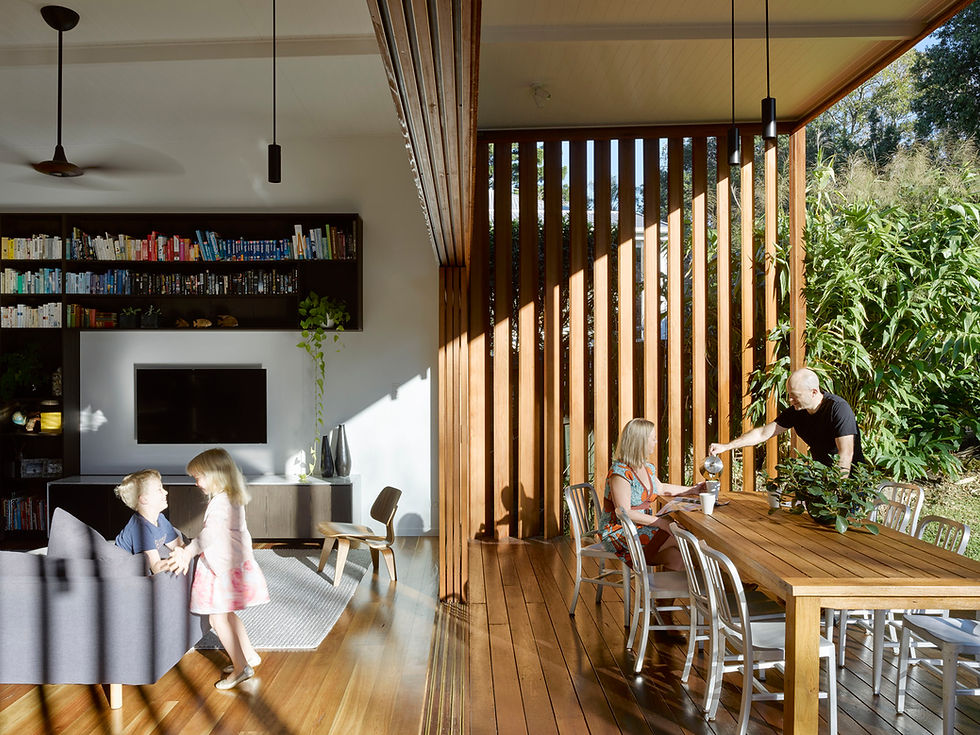Butterfly Effect: Principles for Fighting Global Issues
- Ayush Mishra
- Feb 8, 2023
- 4 min read
The impact of human activity on the environment is undeniable in today's predominantly urban world. From waste generation and water scarcity to natural disasters and air pollution, the challenges we face are complex and pressing. Climate change is one of the most urgent issues of our time, and it's crucial that we take steps to slow its progress.

This means making changes to our production, consumption, and construction habits. As architects, we have a particular responsibility to consider the impact of our design decisions and material choices on the environment. The energy inefficiencies and waste issues that contribute to climate change and environmental degradation are not abstract or distant but are present in the very buildings we use every day.
Buildings are a major contributor to energy consumption in industrialized countries, with the majority of this energy going toward heating and cooling. Often, this energy is wasted due to inefficient construction that does not take into account the local environment and climate. By 2050, it is expected that 70% of the world's population will live in cities, with many of these being megacities in Africa and Asia.

This will lead to significant changes in urban areas and the way we build and live in cities. It is important for both emerging and established cities to focus on urban planning reforms and revitalization in order to address these challenges and improve energy efficiency.
As we work to address the challenges of climate change, it is crucial that new buildings and renovations, from small houses to major public facilities, are designed to have a smaller environmental impact, use fewer resources and energy, and generate less pollution and waste.
1. Offer Well-Being to Users:
It is essential that these spaces allow occupants to feel, see, hear, and breathe without problems, which requires careful consideration of design and material decisions in order to ensure adequate comfort conditions. After all, we spend most of our lives indoors, and comfort greatly affects our health and mood.
1. Feel:

Not too hot or too cold. For us to function comfortably and perform our daily activities, the environment must maintain thermal comfort regardless of the temperature outside. This comfort is determined by factors such as temperature, humidity, and the absence of drafts.
Knowing the climatic behavior of the environment will be essential to determine the balance between solar gain (glass and openings), sealing and ventilation, insulation and thermal inertia. Understanding of the climate is also necessary to determine if the building needs to avoid heat loss or gain to maintain the adequate energy efficiency of its cooling or heating systems.
2. See:

Visual comfort depends on our ability to control the light levels around us. Too much or too little light can cause discomfort, as can sudden changes or large contrasts. Natural light is generally more comfortable for our eyes than artificial light, which is why it is important to consider the color of walls and the technologies of everyday products in order to create positive impacts on spaces. Artificial lighting can be designed to imitate the levels and temperatures of natural light in order to be more health-friendly.
3. Hear:

Well-designed acoustic environments in offices and schools can improve concentration and communication. Acoustic comfort involves reducing internal and external noise and achieving the appropriate acoustic conditions for each space. This can be achieved through the use of materials that reduce external noise and have a balanced combination of absorbent and reflective surfaces to reduce internal reverberations
4. Breath:

Indoor air quality refers to the presence of fresh air in relation to the number of people in a space and the type of activity taking place. In addition to the absence of pollutants, good indoor air quality also involves the absence of bad odors, sensory irritations, and congestion. To create good indoor air quality, it is important to use materials that do not emit volatile organic compounds, high-performance membranes and windows and doors that provide good sealing, and products that help ventilation systems recycle air properly.
2. Become Environment-Friendly:
The environmental impact of a building extends beyond its construction and into its lifetime. Every decision made during the project, including the choice of materials, facilities, orientation, dimensions, and implementation, has an effect on the building's environmental footprint. These decisions will vary based on the specific needs of the building, including the type of structure, the local climate, the intended use of the space, and the budget.

It's also important to consider the environmental cost of transporting materials to the construction site. Providing clear and reliable information to the people who will ultimately use the space is crucial, as they will have a say in future decision-making processes for both large and small projects. There is no universal formula for achieving sustainability, but rather specific solutions that are tailored to the unique circumstances of a particular place, time, and reality.
3. Increase Professional & Constructive Productivity:
Traditionally, the construction industry has been considered low-tech and generates a lot of waste. However, technology is beginning to provide more control, precision, and automation in order to improve productivity on construction sites. Modular and precast solutions can make buildings faster and more adaptable over their lifetime.
For example, a house can be easily expanded or reduced using standardized and modular construction systems to meet the changing needs of its occupants. Prefabrication and offsite manufacturing are becoming increasingly popular in developed countries as a response to labor shortages. While these solutions can increase efficiency and productivity, there are challenges to overcome, such as changing perceptions of modular and precast solutions and convincing developers of their benefits, even if they do not necessarily have a direct monetary value during the bidding process.

Additionally, the incorporation of new technologies like home automation into buildings should also be considered. 3D printing is becoming increasingly important in the field of architecture, particularly for creative or complex projects with a low environmental impact. Building Information Modeling (BIM) is a common tool used in architecture to create precise digital models of construction, allowing for greater control over costs and energy efficiency. BIM technology supports a project throughout all stages, including after construction and during demolition.
4. Embrace Design & Construction Automation:
Virtual Reality creates a completely new environment separate from the real world, while Augmented Reality adds virtual elements that interact with the real world. In the near future, terms and technologies such as big data, drones, home automation, and repetitive design processes will be integrated into daily life, improving architectural processes and the quality of projects and construction.

The concept of Industry 4.0 goes beyond the incorporation of technology and includes communication sensors, the Industrial Internet of Things (IIoT), and smart data to make production processes smarter and more agile. This involves the use of machines that communicate and exchange information in real-time and learn during these processes.
The adoption of new technologies is leading to significant changes in the way we work and organize work. Adopting the BIM methodology can help reduce resource usage, lower costs, and improve product quality. By leveraging data, manufacturers can better meet customer expectations and adapt to their needs in real-time.
It is important to be vigilant and understand how the profession, industry, and technologies are constantly evolving. By identifying and combining the factors that contribute to total comfort ('feel, see, hear, breathe'), we can take steps towards addressing the major challenges of the coming decades. If all architects are aware of this opportunity and utilize the tools provided by new technologies, the collective impact of our individual efforts can be significant at a global level



Comments